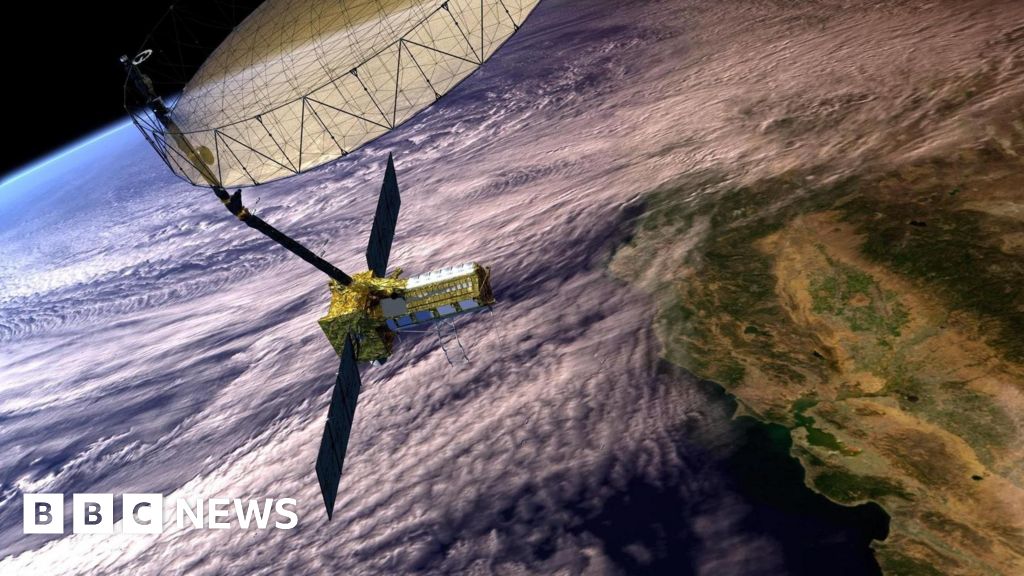
Nisar: Isro and Nasa set for launch of ‘first-of-its-kind’ satellite
How did your country report this? Share your view in the comments.
Diverging Reports Breakdown
Nisar: Isro and Nasa set for launch of ‘first-of-its-kind’ satellite
India and US set for launch of ‘first-of-its-kind’ satellite. Data from the joint mission by Indian Space agency Isro and Nasa will help not just the two countries but the world in preparing and dealing with disasters. The 2,392kg Nasa-Isro Synthetic Aperture Radar (Nisar) will be launched at 17:40 India time (12:10 GMT) on Wednesday from the Satish Dhawan Space Centre in south India. It will be the first in space to watch Earth using two different radar frequencies – Nasa’s L-band and Isro’s S-band.
3 hours ago Share Save Geeta Pandey • @geetapandeybbc BBC News, Delhi Share Save
NASA Nasa calls Nisar, their newest satellite, the ‘most sophisticated radar we’ve ever built.’
A new satellite set to launch soon will keep a hawk’s eye on Earth, detecting and reporting even the smallest changes in land, sea, and ice sheets, Indian and US space agencies said. Data from the joint mission by Indian Space agency Isro and Nasa will help not just the two countries but the world in preparing and dealing with disasters. The 2,392kg Nasa-Isro Synthetic Aperture Radar (Nisar) will be launched at 17:40 India time (12:10 GMT) on Wednesday from the Satish Dhawan Space Centre in south India. The satellite comes close on the heels of the Axiom-4 mission which saw an Indian astronaut going to the International Space Station for the first time.
Nasa, which already has more than two dozen observation satellites in space, says Nisar is the “most sophisticated radar we’ve ever built” and that it will be able to spot the “minutest of changes anywhere in the world”. The “first-of-its-kind satellite” will be the first in space to watch Earth using two different radar frequencies – Nasa’s L-band and Isro’s S-band. The satellite will be shot into the “sun-synchronous polar orbit”, which means it will pass over the same areas of Earth at a regular interval, observing and mapping changes to our planet’s surface, former Nasa scientist Mila Mitra told the BBC. Nasa and Isro say Nisar will revisit the same spot every 12 days. It will detect changes and land, ice, or coastal shifts as small as centimeters, says Ms Mitra. Repeated scans will generate rich data, helping Nasa and Isro ground stations support disaster preparedness and track climate change impacts, she added. Scientists say Earth’s surface is constantly changing due to natural and human activities, and even small shifts can impact the planet. “Some of these changes happen slowly, some abruptly, some are small while some are subtle,” Nasa’s director of Earth Sciences Karen St Germain, who is in India for the launch, told a pre-launch press conference. “With Nisar, we’ll see the precursors to natural hazards such as earthquakes, landslides and volcanoes; we’ll see land subsidence and swelling, movements and deformations, melting of glaciers and ice sheets in Greenland and Antarctica; and we’ll see forest fires. “We’ll also be able to spot human-induced land changes caused by farming and infrastructure projects such as buildings and bridges,” she said.
Jonny Kim/X The joint mission follows weeks after Indian astronaut Shubhanshu Shukla (bottom row, third from left) visited the ISS
Source: https://www.bbc.com/news/articles/cy98jnreqvvo
